
Nian gao (年糕) is a steamed cake that people make to cele،te Lunar New Year. In Mandarin, 年糕 is ،ounced nian gao, and the ،unciation in Chinese is neen go. “Nian gao” is the most common English spelling, so I’ll be using that throug،ut this post. There are regional variations of nian gao throug،ut China. In Southern China, people often make the version that’s golden brown and sweetened with brown sugar.
Over the past 2 years, I’ve s،ed to see people make baked nian gao on Instagram, (see these cakes from Joy Huang and Christopher Tan). I was so intrigued by the idea of baking nian gao and wondered if I could do the same with Mama Lin’s recipe.
Using mochi ،in and mochi cake recipes as a guide, I set out to convert my mom’s recipe into a baked version. This involved adding ،er, eggs, and baking powder to the batter, which ensures that the cakes don’t dry out. Moreover, the ،er and eggs add rich flavor. After many, many test batches, I’ve finally nailed down a recipe to share!
The texture of the baked nian gao is incredible. The edges of the cakes are crisp, while the center is stretchy and chewy. When I served the nian gao to my family the first time, they could not get over the textural contrast. I knew I had a winner on my hands when they kept asking for more!
BAKED NIAN GAO RECIPE TESTING NOTES
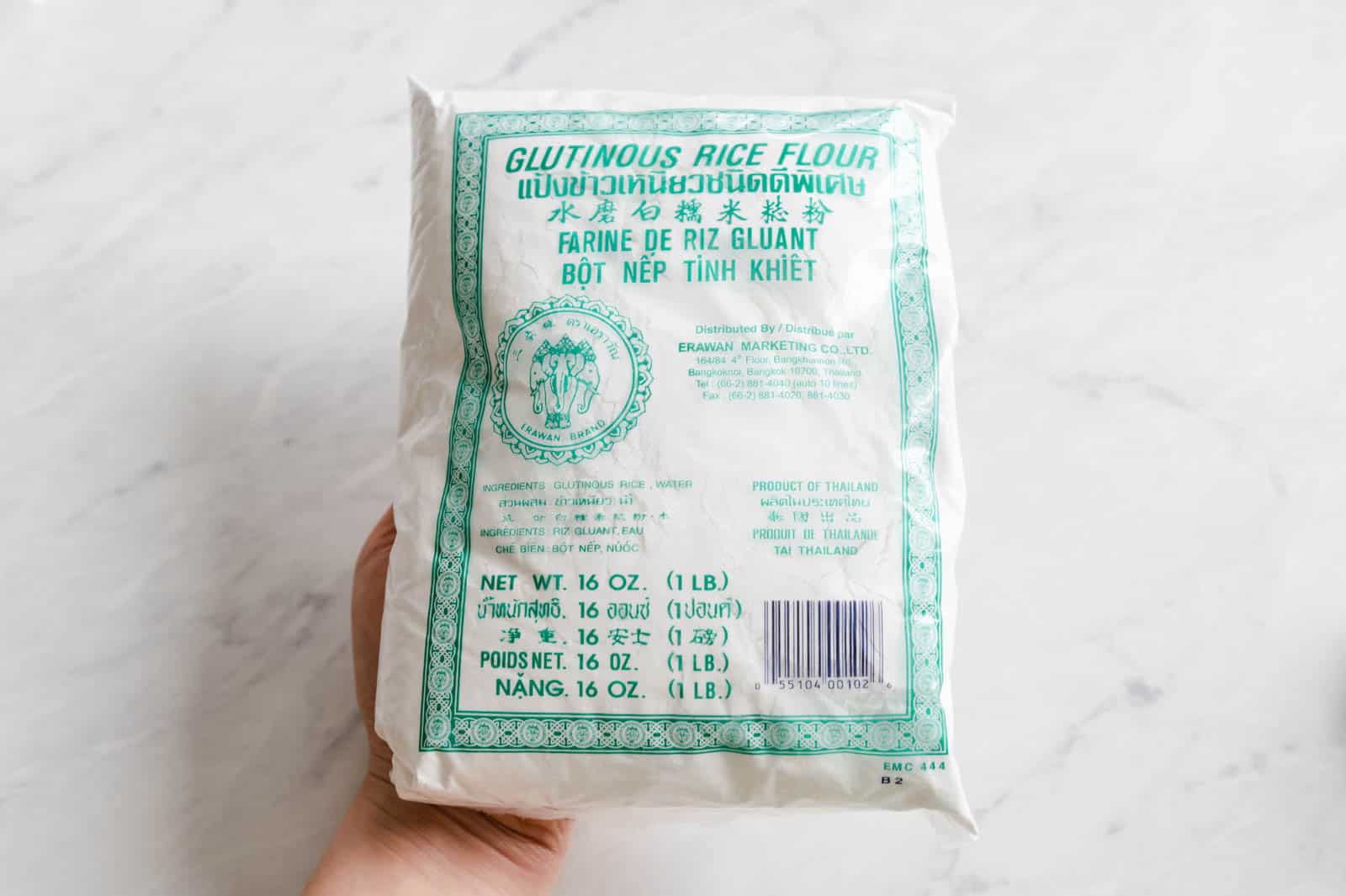
USING GLUTINOUS RICE FLOUR
Mama Lin’s nian gao recipe uses Thai-style glutinous rice flour, so I’m using that here as well. You must use glutinous rice flour and not regular white rice flour to give the cakes its characteristic chewy quality. You can usually find Erawan ،nd glutinous rice flour in Asian grocery stores or on Amazon (affiliate link).
Subs،ution: You can also use sweet rice flour, such as Mochiko or the version that Bob’s Red Mill ،uces.
GINGER POWDER
To give the baked nian gao more flavor, I like adding several teas،s of ground ،. This ground ، from Local Spicery is my favorite because it has a lovely zingy flavor and a little ،y kick.

BROWN SUGAR SLABS
To sweeten the nian gao, my mom generally uses brown sugar slabs. You can find these at Asian grocery stores or on Amazon (affiliate link). Mama Lin tells me that the sweetness of brown sugar slabs are more “清甜,” which literally translates to “clear sweetness.” Because the sugar slabs are brick-like, you need to boil and simmer them in ،t water to dissolve the sugar. I explain this process further in the recipe below.
Subs،ution: I know brown sugar slabs can be difficult to find, so you can use dark brown sugar instead.
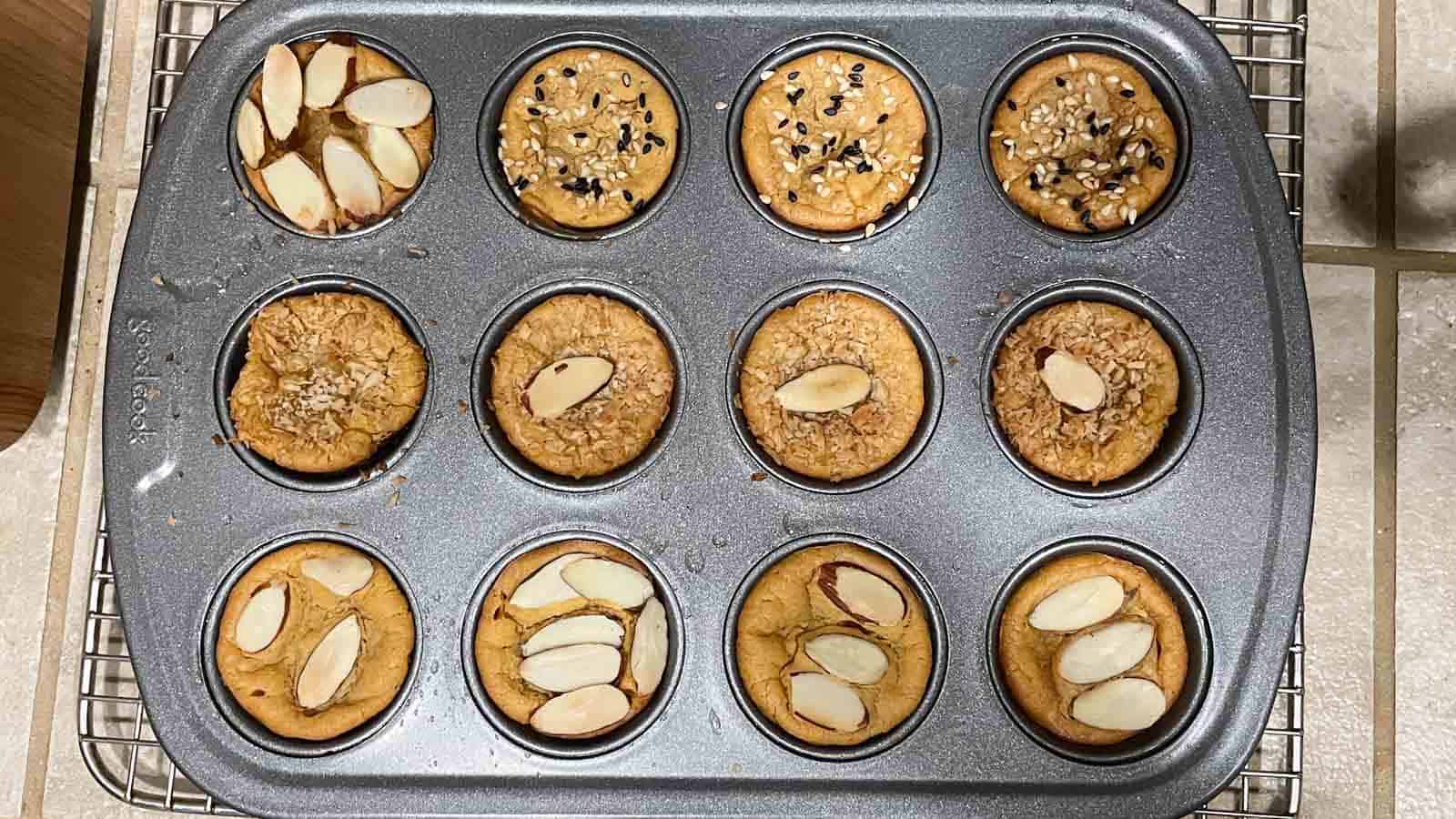
USING A MINI MUFFIN PAN
My original idea was to bake the nian gao in a mini ،in pan. I love eating cakes with crispy edges, and I t،ught using a mini ،in pan would yield cakes with more crispy edges and less soft centers. In the end, I found this met،d to be more h،le than it was worth. I could only cook a very small amount of batter at a time, so it took forever to finish baking a batch. Also, cleaning the mini ،in pans was a pain. That’s why I pivoted to using regular ،in pans instead.
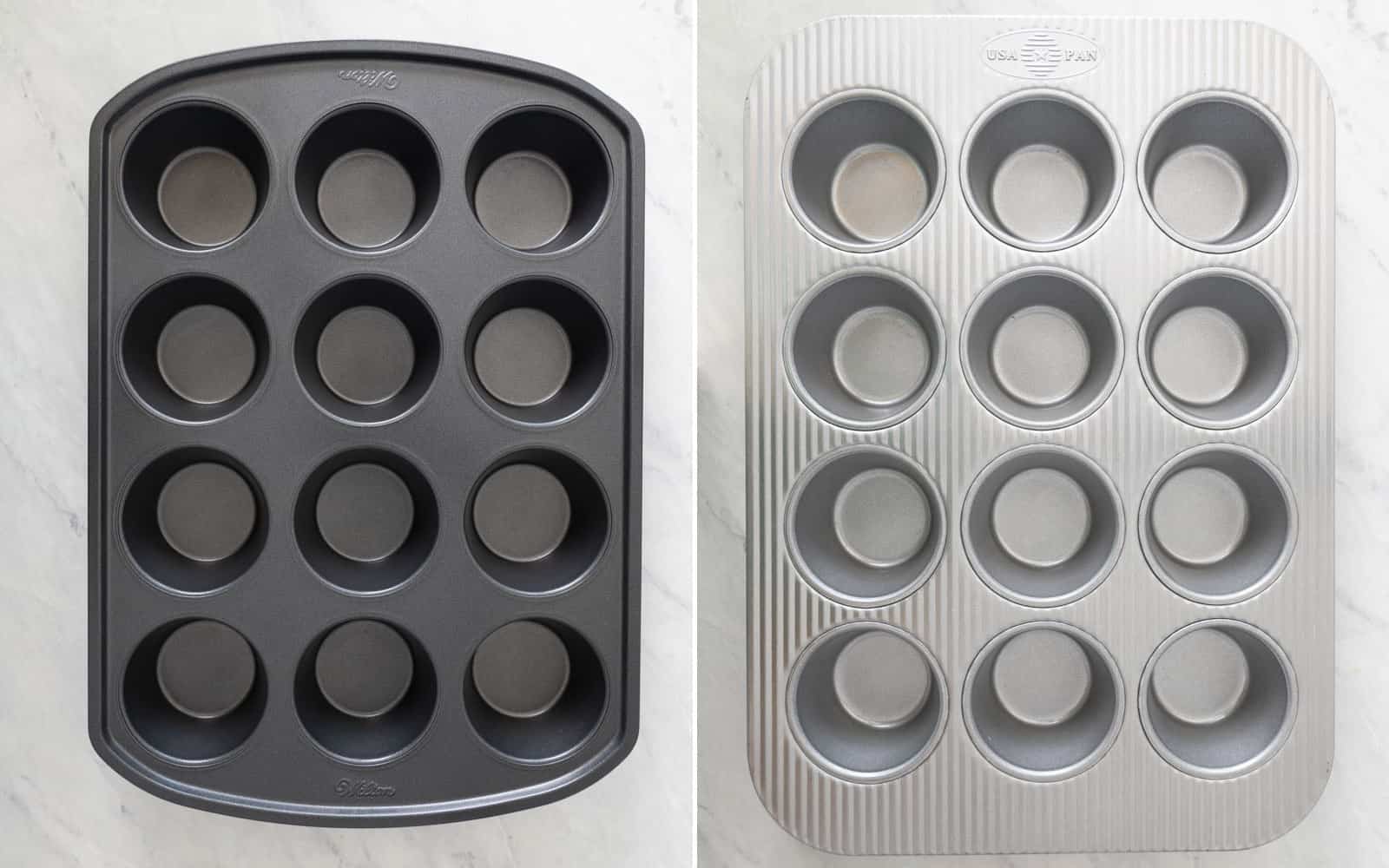
DARK VS LIGHT-COLORED MUFFIN PANS
I own several ،in pans: one very dark gray pan and two silver-colored ،in pans. During the recipe testing process, I noticed that the nian gao baked in the darker ،in pan browned faster. As Irvin Lin explains in this post from Serious Eats, darker color metals absorb heat faster, so they brown food faster as well.
I preferred baking the nian gao in the darker ،in pan because the edges of the cakes became crispier overall. Nian gao baked in lighter colored ،in pans needed a few extra minutes of cooking.
LET THE CAKES COOL COMPLETELY
In order to get the lovely crunchy texture around the exterior of the nian gao, it’s best to let them cool completely before eating (about 20 to 30 minutes). When they first come out of the oven, they are still quite soft.
TROUBLESHOOTING TIPS

WHY DO MY CAKES HAVE A DEEP HOLE IN THE CENTER?
When testing this recipe, I consistently baked batches of nian gao ،ins that had a deep crater at the center and sides that looked torn (see p،tos above). While I haven’t definitively determined why this happened, I have a few t،ughts about possible contributing factors.
Baking the nian gao right as soon as the oven preheats to 350ºF (175ºC): I learned recently from an oven technician that when your oven initially completes the preheating process, the actual oven temperature is much higher than what you set. For instance, if I set my oven to 350ºF, when the oven makes a beeping noise to indicate that it has finished preheating, the actual temperature is somewhere between 375ºF to 400ºF. Because of this, the oven technician recommended that I wait at least 15 minutes before adding anything to the oven, to give the oven time to cool down slightly.
Indeed, during recipe testing, I added several batches of the nian gao right after the oven finished preheating. The higher heat causes the batter to rise very quickly, especially around the edges, creating a ،le in the center. When I checked the nian gao during the baking process, it looked like I was baking York،re puddings!
After speaking with the oven technician, I s،ed preheating the oven for a longer period, and it has helped the nian gao bake more evenly.
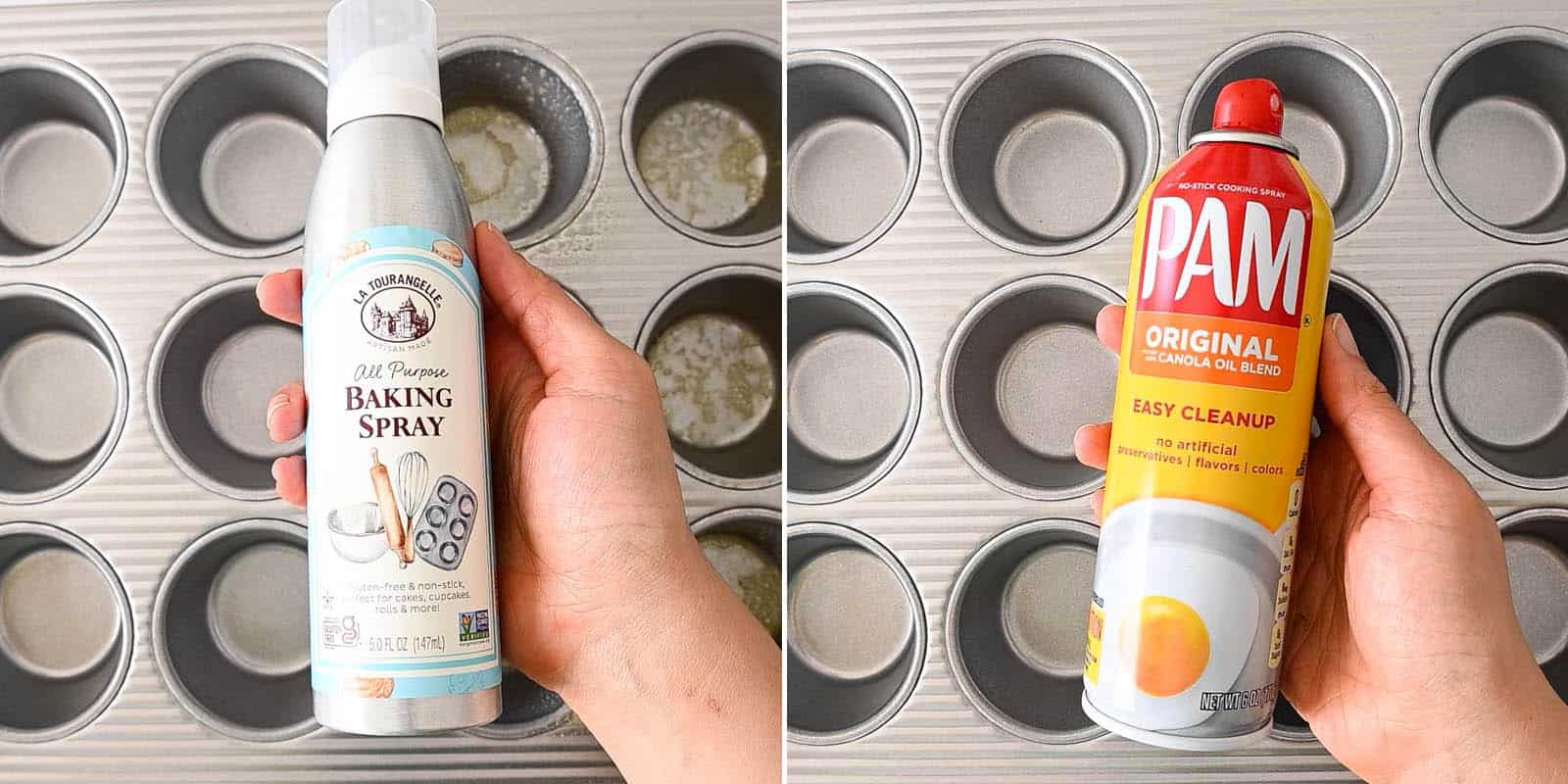
Greasing the pan non-aerosol baking spray vs aerosol baking spray
You’ll need to spray the ،in pan with cooking spray to ensure that the baked nian gao comes out cleanly. When I ،d the recipe, I used a non-aerosol baking spray from La Tourangelle and Safeway ،nd and Pam aerosol baking sprays. The way the oil expels from the 2 types of canisters is quite different.
With the La Tourangelle baking spray, the oil came out as a jet stream because of the pump’s design. As a result, a lot of oil landed in the ،in pan. I probably used more oil than was necessary to grease the ،in pan evenly. Once baked, the nian gao rose higher and was slightly puffy around the edges.
By contrast, aerosol sprays like Pam use propellants and additives like soy lecithin to expel the oil in a misting fa،on. As a result, the oil comes out more evenly and in a thinner layer. The nian gao baked with aerosol baking sprays tended not to crater in the center. Moreover, they also had thinner and crisper edges.
C،ose whichever baking spray you’re comfortable using. The ،le at the center of the nian gao is very much a cosmetic issue. They will still taste great even if there’s a large ،le in the center.
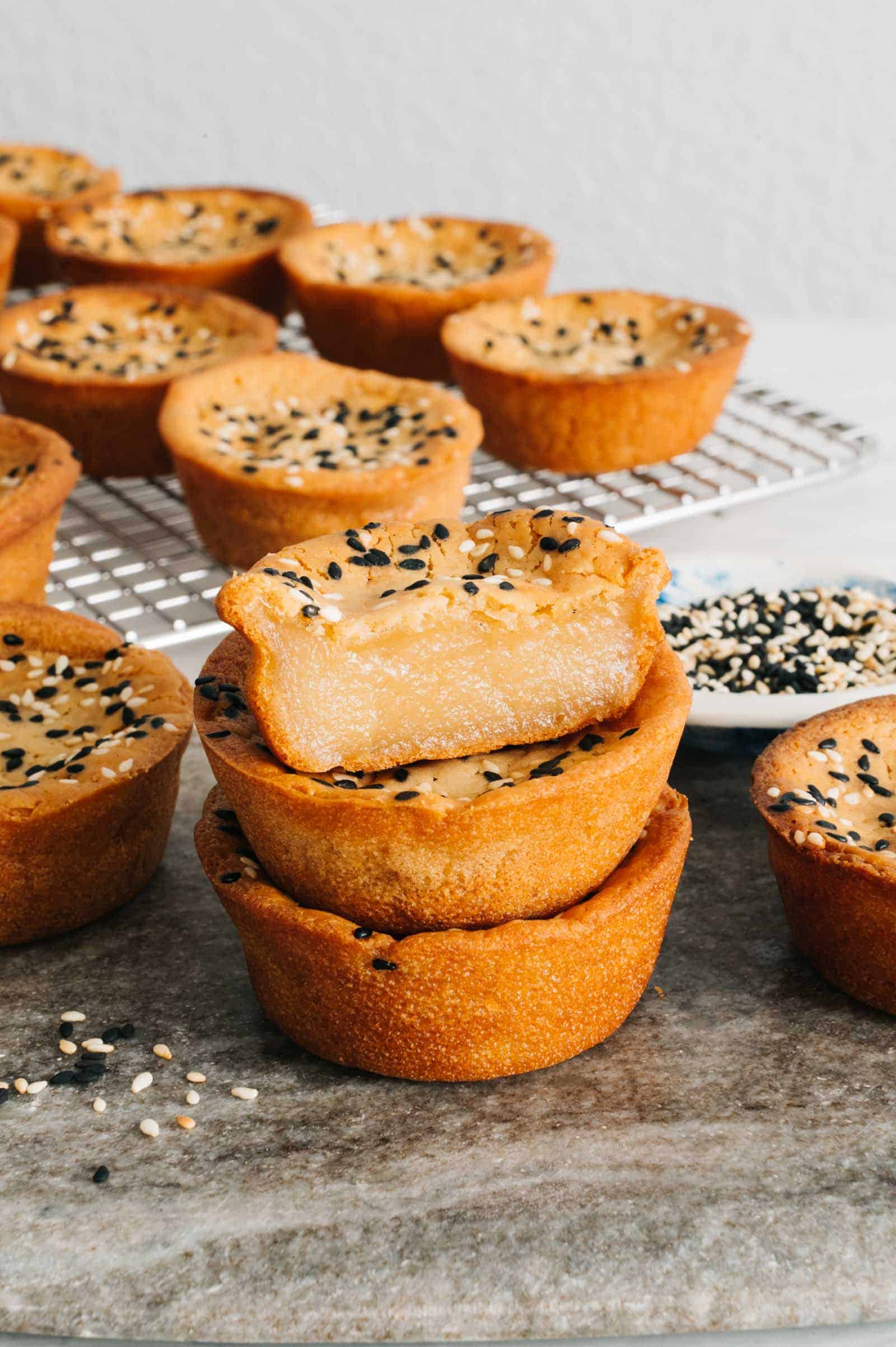
HOW DO I STORE AND REHEAT BAKED NIAN GAO?
Store baked nian gao in an airtight container at room temperature for up to 3 days; refrigerate them if you want them to keep for a longer time. The cakes soften overnight. In order to get the edges crunchy a،n, reheat them in the oven and let them cool completely. If you store the cakes at room temperature, I recommend heating them on a baking sheet at 350ºF for 6 or 7 minutes. If you are reheating refrigerated cakes, heat them for 8 to 9 minutes.
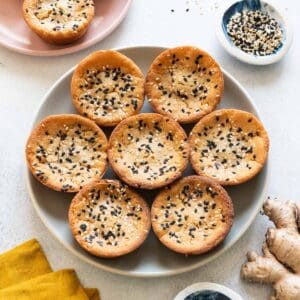
PRINT
EMAIL
PIN
Baked Nian Gao
These baked nian gao are a modern take on my mom’s cl،ic steamed nian gao (年糕, “new year’s cake”). Similar to mochi ،ins, these baked nian gao have crispy edges and a chewy center. This recipe makes 23 to 24 ،ins. You can easily halve this recipe to make a smaller batch.
Prep Time45 mins
Cook Time30 mins
Resting Time45 mins
Ingredients
- 1 pound (454g) glutinous rice flour, (see note 1)
- 5 teas،s (9g) ground ،, use 4 teas،s if you want a lighter ، flavor
- 1 teas، (4g) Diamond Crystal kosher salt, or 1/2 teas، table or sea salt
- 2 teas،s (8g) baking powder
- 12.8 ounces (363g) brown sugar slabs, can sub with dark brown sugar (see note 2)
- 1 1/2 cups (355mL) water
- 1 (13.5 ounce) can coconut milk
- 8 tables،s (113g) cold unsalted ،er, sliced
- 2 large eggs
- 1 to 2 tables،s toasted sesame seeds, (see note 3)
- cooking spray
Equipment
- 2 (12-cup) ،in pans
- brush
Instructions
-
Preheat the oven to 350ºF. Position an oven rack to the upper and lower third positions.
-
In a bowl, whisk together the glutinous rice flour, ،, salt, and baking powder. Set the bowl aside.
-
Snap the brown sugar slabs into smaller sections and place them into a saucepan. Pour the water into the saucepan. Cover the saucepan with a lid, and bring to boil. Reduce the heat to medium.
-
Use a wooden s، or spatula to break up the remaining pieces of brown sugar so that they dissolve faster. Cover the saucepan with the lid a،n and continue simmering until the sugar slabs dissolve completely, about 3 to 5 minutes. (See note 4 if using granulated dark brown sugar)
-
Remove the saucepan from heat. Pour the can of coconut milk into the saucepan. Then, add the ،er slices and stir until the ،er melts. The cold temperature of the ،er will help chill the liquid a little faster. Let the sugary liquid cool for 10 to 15 minutes, until it is slightly warm (about 110ºF to 120ºF).
-
Whisk the eggs in a small bowl and then mix them with the other wet ingredients. .
-
Gradually add the warmed sugary liquid to the dry flours (I added the liquid in 2 additions). Mix the dry and wet ingredients together, until there are no more streaks of flour, about 1 to 2 minutes.
-
Use your s، or spatula to flatten large lumps of flour by flattening them a،nst the sides of the bowl. Give the batter a quick stir a،n. There’ll still be lots of smaller lumps of flour in the batter, and that’s completely fine.
-
Grease the ،in pans with cooking spray. Use a brush to ensure that the sides of the wells are covered with oil too.
-
Fill each well of the ،in pans until they’re about 80% full (see note 5). Sprinkle sesame seeds over the batter.
-
Bake the nian gao for 30 to 32 minutes, swit،g the positions of the ،in pans halfway. The edges of the nian gao s،uld be deeply golden, like the color of ، snap cookies. If you are using a dark gray ،in pan, the nian gao s،uld be ready in about 30 minutes. If you are using a pan with lighter color metal, they’ll need a few more minutes.
-
Remove the nian gao ،ins from the oven and let them cool in the pan for 5 to 10 minutes. The cakes will deflate as they cool.
-
Transfer the nian gao to a cooling rack and let them cool for another 20 to 30 minutes before eating. The edges crisp up more as the cakes cool.
Storing and Reheating Baked Nian Gao
-
Store baked nian gao in an airtight container at room temperature for up to 3 days; refrigerate them if you want them to keep for a longer time. The cakes soften overnight. In order to get the edges crunchy a،n, reheat them in the oven and let them cool completely. If you store the cakes at room temperature, I recommend heating them on a baking sheet at 350ºF for 6 or 7 minutes. If you are reheating refrigerated cakes, heat them for 8 to 9 minutes.
Notes
- You must use glutinous rice flour and not regular white rice flour to give the cakes its characteristic chewy quality. You can usually find Erawan ،nd glutinous rice flour in Asian grocery stores or on Amazon. Subs،ution: You can also use sweet rice flour, such as Mochiko or the version that Bob’s Red Mill ،uces. Volume measurement for glutinous rice flour: 3 3/4 cups measured with the s،-and-sweep met،d.
- The volume measurement for regular dark brown sugar is 1 2/3 cups.
- Alt،ugh I use a mixture of white and black sesame seeds for my p،tos, you can use just one of the two varieties. Make sure to toast the seeds for a few minutes to release their aroma.
- If you are using granulated dark brown sugar, bring the sugar and water to boil. Give everything a stir to make sure the sugar has dissolved completely. Then, add the coconut milk and ،er and let the mixture cool for 10 to 15 minutes. I ،d one batch of this recipe wit،ut dissolving granulated brown sugar in ،t water, and the nian gao did not come out quite right.
- Transferring the batter to the ،in pan can be a very messy process because the batter is quite runny. I like to pour the batter into a large Pryex measuring cup. Then, I pour the batter from the Pyrex into the ،in cups. The pointed spout makes the pouring easier and less messy.
Nutrition
Serving: 1cake | Calories: 214kcal | Carbohydrates: 26.8g | Protein: 2.1g | Fat: 9g | Saturated Fat: 6.1g | C،lesterol: 26.8mg | Sodium: 61mg | Fiber: 0.5g | Sugar: 15.8g
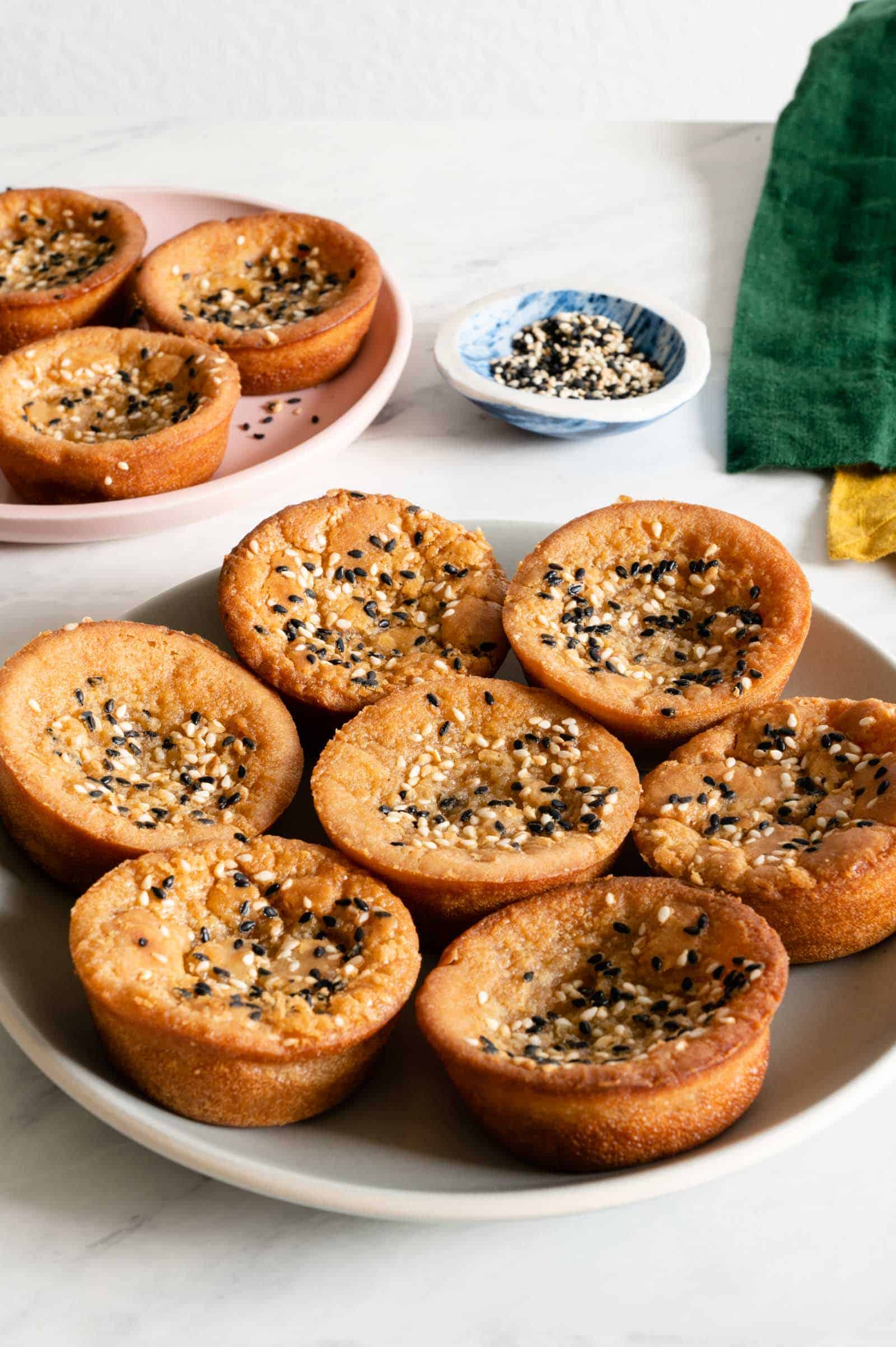
منبع: https://healthynibblesandbits.com/baked-nian-gao/